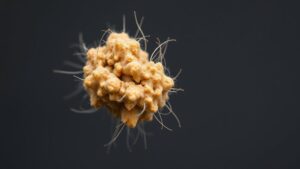Fungal infections like hair fungus thrive in warm, moist environments, often causing itching, flaking, and redness. These infections can stem from poor hygiene, excessive sweating, or weakened immunity, leaving many searching for relief. While over-the-counter antifungal products help, natural remedies like apple cider vinegar and tea tree oil also offer soothing benefits. Comprehending the causes and treatments can make managing these stubborn infections easier—but apprehending how to prevent them from returning is just as vital.
Understanding the Causes of Fungal Infections
Fungal infections often start as soon as tiny organisms like yeast or mold find the right conditions to grow. Humid environments, like sweaty gyms or damp locker rooms, create the perfect breeding ground for these fungi.
Poor hygiene, such as not washing hair regularly or sharing contaminated items like towels, can also invite infections. Tight clothing or hats trap moisture, making skin and scalp more vulnerable.
Weakened immune systems, often due to stress or illness, make it harder for the body to fight off these invaders. Symptoms include itching, redness, flaky skin, or unusual hair loss.
While fungi thrive in warm, moist places, simple awareness and small changes can reduce risks substantially. Knowledge of these causes helps in preventing infections before they take hold.
Effective Home Remedies for Hair Fungus
Though hair fungus can be uncomfortable and embarrassing, several home remedies offer relief through targeting the infection naturally. Natural hair treatments like apple cider vinegar help restore scalp pH balance, while coconut oil’s antifungal properties combat the fungus whenever used in topical oil applications.
Tea tree oil, diluted with a carrier oil, reduces itching and inflammation. Aloe vera soothes irritated skin, and garlic paste—though strong-smelling—can fight fungal growth. Keeping the scalp clean and dry prevents further spread, and avoiding tight hairstyles reduces moisture buildup. Yogurt applied as a mask introduces probiotics to the scalp, promoting healthy bacteria. These remedies, whenever used consistently, can ease symptoms without harsh chemicals. Always patch-test oils initially to avoid irritation. Should symptoms persist, consulting a doctor is advised.
Preventing Fungal Infections From Recurring
Even after treating a fungal infection, the problem can come back provided the right steps aren’t taken. Preventing recurrence starts with maintaining proper hygiene, like keeping skin dry and clean, especially in areas prone to moisture. Wearing breathable fabrics and changing damp clothes quickly helps.
Managing underlying conditions, such as diabetes or weakened immunity, is essential since these can make infections more likely. Avoiding shared personal items, like towels or combs, reduces exposure to fungi. Regularly disinfecting surfaces and washing bedding can also lower risks.
Staying mindful of preliminary signs, like itching or redness, allows for quicker action. Small, consistent habits make a big difference in keeping fungal infections from returning.
When to Seek Medical Help for Fungal Infections
While most fungal infections can be managed at home, certain signs mean it’s time to see a doctor. Signs of infection progression—like worsening redness, swelling, or pain—should prompt a visit.
If the infection persists despite treatment or causes fever, seeking professional diagnosis is vital. People with weakened immune systems, diabetes, or persistent symptoms lasting over two weeks should also consult a healthcare provider.
Open sores, pus, or severe itching that disrupts daily life are additional red flags. A doctor can confirm the infection type and prescribe stronger treatments if needed. Ignoring severe symptoms risks complications, so timely medical help ensures proper care. Prompt intervention prevents the infection from worsening and accelerates recovery.
Conclusion
Like a stubborn shadow, fungal infections linger—but light always finds a way. Whether through nature’s remedies or trusted treatments, relief is within reach. Just as roots need air to thrive, your scalp craves care to heal. As home efforts fade, medicine stands ready. Even the toughest fungi retreat when they encounter patience and persistence. The path to a healthier scalp isn’t a sprint; it’s a steady walk toward sunlight.





